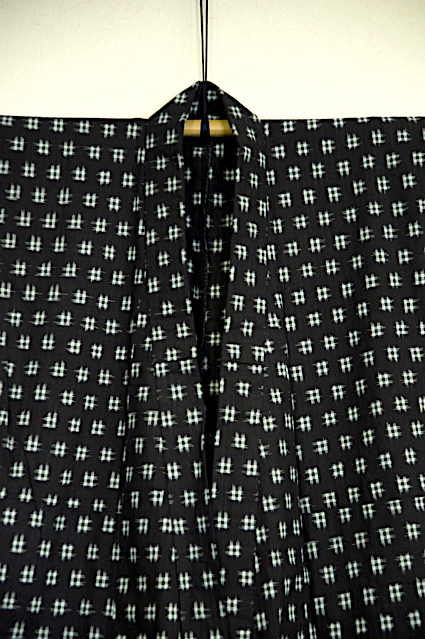伊予絣
Pronunciation: Iyo-kasuri
Production area: Matsuyama City, Ehime Prefecture
Iyo-kasuri is a plain-weave cotton textile woven with pre-dyed threads, known for its durability and distinctive kasuri (ikat) patterns such as lattice, cross, and pictorial motifs. Along with Kurume-kasuri from Fukuoka and Bingo-kasuri from Hiroshima, it is regarded as one of the three great kasuri textiles of Japan. Traditionally, it was widely worn as everyday kimono fabric among the common people. The origins of Iyo-kasuri trace back to 1801–1803, when Kana Kagiya, a woman from the Imade district (present-day Nishihabu, Matsuyama City), was inspired by the mottled patterns left on farm roofs after straw had been replaced and bamboo frames tied down. She applied this idea to textiles, giving birth to the kasuri style unique to Iyo. During the Meiji period, technological improvements to looms led to mechanization and mass production. Iyo-kasuri soon became Japan’s leading kasuri textile, at one time accounting for nearly half of the nation’s kasuri output, with annual production exceeding two million bolts. Today, with the decline in demand for kimono, production has significantly decreased, and only small quantities of kimono bolt fabric are still woven.




















